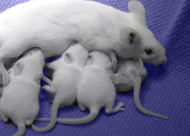 My Pet Peeve -- (Non)-Reporting on Lab Animal Pain
My Pet Peeve -- (Non)-Reporting on Lab Animal PainI’ve already written how it irks me that so few scientific publications include good detail of...
 Pain and Laboratory Animals
Pain and Laboratory AnimalsHot off the press: the National Research Council’s Recognition and Alleviation of Pain in Laboratory...
 Single Drug Lethal Injection --- For Animals
Single Drug Lethal Injection --- For AnimalsOn December 8, the state of Ohio broke with tradition and killed a condemned prisoner with a single...
 Scientists Discover Why Suffocation Causes Fear (in Mice)
Scientists Discover Why Suffocation Causes Fear (in Mice)As a veterinarian for research animals, I have an odd job, and part of the oddness is the amount...








